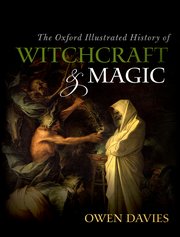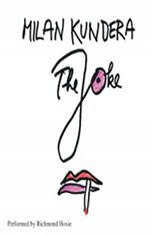
These twin topics captivate multitudes. Even by classical times, editor Owen Davies begins, people wondered about magic's origins, and reacted to its practitioners who bewitched by the occult. Beyond frisson or fun, fear or faith, witchcraft and magic free social energy, excite art, and infuriate earthly powers that be or which have been. Beyond European representations, beliefs and practices filtered into and out from Indian and Eastern, along with African and Amerindian, influences. While magic's fundamental concepts trace back millennia, they continue to evolve, as science and religion change.
In learned but accessible chapters, eight scholars explain this process. "Magic in the Ancient World" opens this chronologically arranged essay collection. Four thousand years ago, cuneiform tablets testify to daily emergencies eased by incantations and counter-measures. Dog bites were countered by creating a clay dog. The evil eye hovered over Mesopotamian catastrophes. A professional magician had to be called upon to repel a bird-like demon, attracted by a crying baby waking a household. Egyptians, Hebrews, Greeks and Romans generated their own mysticism and myths about these mercurial beings. Peter Maxwell-Stuart collates cases; he shows how monks in fourth-century Palestine installed a floor mosaic, patterned with biblical inscriptions to protect both monks and visitors. The incorporation of such verses to ward off ill attests to their ubiquity in common belief.
What these peoples begged to repel were demons. Sophie Page distinguishes normative Church rituals from those persisting which were unauthorized, and these were associated with the Devil. Yet exchanges of learning between Jewish scholars around the Mediterranean and their Arabic peers "transformed the status of late medieval magic from an illicit activity into a branch of knowledge."
Alchemy, astrology, and divination augmented the inquiries of Byzantine magicians, and the Latin West stretched these webs of influence. Political, natural, iconic, and angelic forms of magic attracted those who encouraged demons by necromancy, and those who rushed to exorcise such dark forces.
This trend led to charges of heresy and sorcery. Threatened by the Cathars and the Waldensians, Catholic institutions constructed the Inquisition, with advocates "responsible only to the Pope." The royal courts sought to squelch relatives of the favored ruler, and accusations of the ambitious social climber who was said to have turned to a diviner or soothsayer were common among courtiers. Ambitious females were often targeted, as they were deemed tainted more by popular than learned forms of magic. Both types stirred up a "science of demons" to address and attack malign spirits.
By the fifteenth century, James Sharpe demonstrates, "the Devil was seen as the embodiment of evil." Satan had waited for the Church to promote him from Job's adversary to the tempter not only of the Son of God but the sons and daughters of mankind. Most Europeans agreed, despite the Reformation and the Catholic counter-movement, that the Devil was real. Thus so were his witches. Puritans bickered with priests over the efficacy of exorcism, and the veracity of the
sabbat gathering. Witches attended, many Christians concurred. But whether this was by flight (via broomstick in later rumor) or by solely the spirit, as wifely bodies lay sleeping next to their husbands, remained contested.
In the Enlightenment, progressive preachers pushed the priests and ministers asserting the clear and present danger of demonic possession and intervention into the shadows, as irrational superstition. But judicial efforts against witches lived on among die-hards. Rita Volmer enters to guide readers through the once widespread witch trials. These aimed at women, about 75-80% of juridical victims.
Volmer admits this lack of parity cannot be accounted for with any "obvious and simple answer." It was not a "witch craze." Nor was this procedure driven by panic or, if the term is taken seriously, a "witch-hunt" unless this applied to a larger group prosecuted as suspects. Her charts assist readers in envisioning statistics of trials, although data are lacking about totals, numbers, and "final verdicts."
Trials might trap more than one defendant. Allegations of witchcraft did not guarantee execution. Volmer's extensive research merits attention, to counter claims of nine to twenty million fatalities in what 1970s feminists deemed "the burning times." Volmer estimates between 40,000-60,000 died in Europe and its colonies. A significant portion of executions occurred in the Holy Roman Empire.
Wild rumors have predictably multiplied about this purported diabolical enemy. "The Witch and Magician in European Art" commences as Charles Zika examines woodcuts from Hans Baldung, who created the enduring image of three naked women cavorting around a "seething pot." That cauldron contained salves and potions. These, associated with women's wily wicked work, spawned imitations and elaborations. Broadsheets warned of frenetic. fiery, and erotic goings-on at "the witch's sabbath." Sensationally, illustrations delineated conspirators occupied deeply in the pursuit of subversive acts not limited to dancing, feasting, or riding goats. The sexual, the female, and the forbidden beckoned.
With a few color, mostly monochrome depictions of amulets, engravings, and figures engaged in tamer doings than a Walpurgisnacht,
The Oxford Illustrated History of Encyclopedia of Witchcraft & Magic enables readers to visualize as well as to comprehend the hold of these storied forces on the imagination
. Its compiler, Owen Davies, presents two aspects of these phenomena nearing our era.
Popular magic demonstrates application as cures, as transference of bad spirits to an artifact, or as "passing through" a stone with a hole or a narrow stony gap, at least if a prehistoric monument was nearby. Circles kept their symbolic importance, for circumambulation and encircling busied adepts in ancient Egypt as well as seventeenth-century Scotland. Regional diversity contributed to the local efficacy of particular charms and spells. Davies devotes attention too to the Catholic and Protestant distinctions which filtered through folk cultures. One denomination might denounce another's superstitions, only to have its own faithful surreptitiously resort to cunning-folk to get a second opinion when a physician's diagnosis left a patient dissatisfied. These practices lasted long enough to be documented by folklorists. In turn, the survival of popular magic sparks repression up to today.
These rituals and remedies were consigned by missionaries, colonial officials, and pioneering anthropologists as sordid or salacious evidence of an earlier stage of religion, indulged in by supposedly heathen or backward races. Max Weber over a century ago argued that this "age of magic" gave way to first the Reformation and then secularized modern societies bent on progress. Yet, as Davies sets forth, Hermeticism and an occult Enlightenment accompanied early modernism.
Astrology, the Kabbalah, and mesmerism resonated. Freemasonry and mystical Christianity enjoyed prominence in the beginning of the nineteenth century. The Rosicrucians, the Golden Dawn, and Aleister Crowley (son of a wealthy lay preacher in the austere Plymouth Brethren) timed their rise to the late-Victorian turn to spiritualism. Gerald Gardner took up a portion of Crowley's occult fame. But he shifted the attention to create, as Davies cautions, rather than discover, Wicca. Gardner's assemblage of what was extant in history, tradition, and orders followed a venerable method among those who were supposed to have revived occult lore, surviving through a secret lineage of initiates.
By the middle of the twentieth century, first Crowley, next Gardner, then Doreen Valente with her coven and Alex Sanders as "King of the Witches" courted British media. As Davies remarks tersely, Fleet Street did not strain for accuracy: "Wicca came to be identified with a lack of clothing." Tabloids capitalized on this new witch craze. The international reach of witchcraft generated suspect but also serious coverage. Robert J. Wallis surveys anthropological theories and investigations.
As Tanya Luhrmann's late-1980s dissertation epitomized, an outsider academic entering a magical circle could upset the trust placed in scholars by practitioners. Letting the right one in to a group widely misunderstood requires truth and tact. Controversy over these topics has shifted from habitual prohibition of sympathy towards witches to an acceptance of how they themselves control scrutiny.
Jenny Blain's approach benefits from the ethnographic framework applied to the
seidr, said to be a type of shamanism drawn upon by contemporary Norse heathen reconstructionists. She, Wallis, and informed colleagues contribute challenging studies to "disrupt the insider/outsider, rational/irrational, superstition/science divides." Insiders began to complete graduate schools and obtain professorships. Both successes are very recent, considering the long record of extreme prejudice towards adherents.
A very visible indication of tolerance may emerge from the rapt reception of many towards the Harry Potter books and films. This expands to Oz, Buffy, fairy tales, thrillers, movies and series of varied genres. Willem de
Blécourt examines a proliferating array, with due credit to a certain Mrs. Darrin Stevens and her 1960s coterie. Ugly, sexy, or domesticated, once unleashed, witches dramatized as such grab the gaze of the enchanted or horrified audience. Conjured, witches threaten. Summoned, they electrify conflicts, rescue victims, or seek to engender plot complications. Integrating antiquated stereotypes, sent up satirically or exploited lazily, tensions of gender, power, and ambiguity here live on. Audiences may not notice these tropes, but they exemplify the spell magic casts upon millions.
For those so captivated, suggested reading follows. While certain leading scholars will find themselves relegated to its documentation rather than featured in chapters, this serves as a respectable resource. It is hoped this solid anthology of level-headed observation of topics will supplant spurious New Age-tinged assertions as well as lurid "exposés." This attractive book presents the story of how men and women, and increasingly children and teens react to popular representations of magic. They rush to or flee from a source of energy and mystery which keeps swaying and/or scaring the curious. (PopMatters 4/14/17: "The Sexual, the Forbidden, and the Female Beckoned"; Amazon US 4/24/17)
































